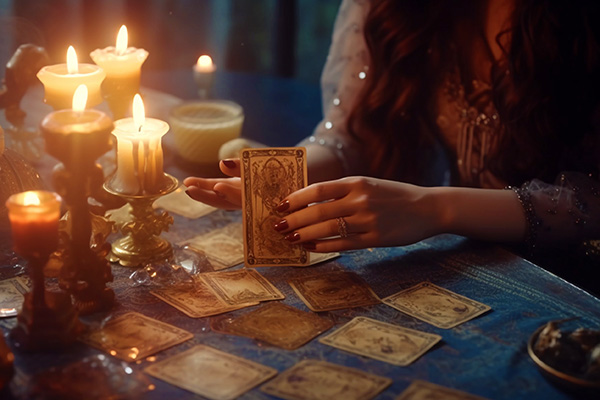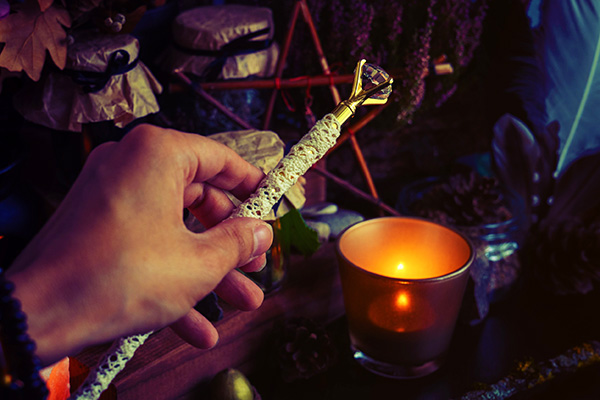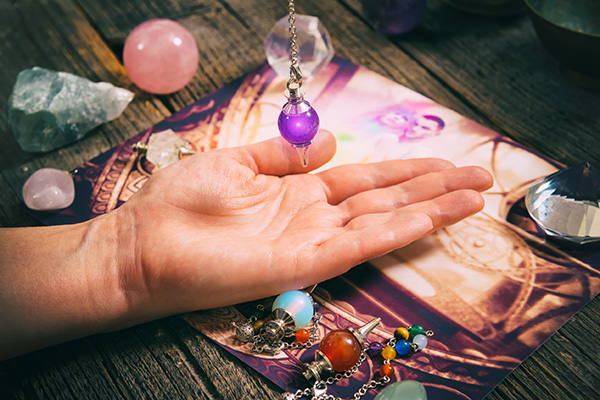mysticism
The Timeless Appeal Of Tarot Divination
 I have yet to meet a spiritually-minded person who does not like the Tarot, or at least is not a little intrigued by this famous deck of cards.
I have yet to meet a spiritually-minded person who does not like the Tarot, or at least is not a little intrigued by this famous deck of cards.
The Tarot is arguably the world’s most popular and widely used divination tool, renowned for its rich symbolism and the depth of insight it offers. As an esoteric tradition dating back centuries, the Tarot has evolved into a diverse, sophisticated system of divination used by people from all walks of life to explore the mysteries of the mind, spirit, and the future.
Unlike some other forms of divination that require specialized knowledge or tools, the Tarot is accessible to both beginners and seasoned practitioners, offering a unique blend of art, intuition, mysticism, and storytelling. Its versatility allows it to address a wide range of questions, from personal and spiritual dilemmas to broader societal issues, making it a go-to resource for those seeking guidance, clarity, and self-discovery in an ever-changing world.
Each of the 78 cards in a Tarot deck is loaded with symbolic imagery and archetypal meanings that can be interpreted on multiple levels, from the deeply psychological to the spiritual and mystical. This layered symbolism allows diviners to explore personal dilemmas, spiritual growth, and the mysteries of life.
Unlike other divination tools that may rely on more rigid systems, Tarot offers a fluid framework that adapts to the reader’s intuition, personal beliefs, and level of psychic ability, making it accessible to people of diverse backgrounds and spiritual practices.
How To Use A Wand In Your Energy Work
 It is not widely known that a magic wand is so much more than a mere fantasy accessory in popular stories like the Harry Potter series andThe Chronicles of Narnia.
It is not widely known that a magic wand is so much more than a mere fantasy accessory in popular stories like the Harry Potter series andThe Chronicles of Narnia.
While popular culture has certainly cast wands in a fun, magical light, their true potential as metaphysical tools in real-world spiritual and energy work is less known and mostly underestimated.
Far from being a fictional artifact, a wand has traditionally served as a conduit for directing intention and channeling energy. When used with respect and purpose, a “magic” wand can be a vital tool in one’s metaphysical practice.
I view my wand as an energy tool to harness and direct intention as a means to bring about change in myself, another person, a pet, or a situation. Whether I’m working directly with someone in a healing session or using it remotely with a photo or personal object, my wand helps me focus healing energy to address blocks, wounds, or even negativity.
In a healing session, I use the wand to direct energy to where it’s needed most. This may mean helping someone release emotional blocks, alleviate physical pain, or transform negative energy.
Wands have a rich history in various cultures and have been used in many ancient civilizations. In ancient Egypt, for example, staffs and wands were used by priests and deities as symbols of authority and power. These objects were decorated with mystical symbols and believed to have protective and healing properties. Similarly, in Mesopotamia, priests and shamans used wands in religious rituals and ceremonies.
The Fairies Will Find My Pets’ Final Resting Place
Over the years, as I have expanded my spiritual understanding and esoteric knowledge, I have come to rely on a number of spiritual entities and metaphysical beings for guidance and support on a daily basis. This assistance from the higher realms is vital not only in my professional work as a psychic reader and healer, but also in my personal life.
I have learned that calling upon different spiritual beings for different things provides me with more holistic and powerful guidance, protection and support in different areas of my work and life. Different types of spiritual beings serve a unique purpose according to their inherent qualities and roles.
For example, I turn to my ancestors and guardian angel for personal safety and comfort, feeling their presence as a calming and protective force, especially during very difficult times. My ancestors also provide me with personal insight and a sense of continuity, helping me to navigate everyday challenges and connect with my cultural and family roots.
My spirit guides counsel and support me in my professional psychic and healing practice, as well as in my spiritual growth and life journey. They provide me with insight and wisdom to make informed life choices and decisions. At times, I call upon one of the archangels, such as Michael or Raphael, for more specific needs, such as protection from physical harm or for physical healing, to draw upon their specialized energies.
The ascended masters and the divine I call upon for deeper spiritual enlightenment, higher consciousness, and to cultivate specific spiritual virtues such as compassion, humility, gratitude, forgiveness, patience, generosity, integrity, and courage.
The Mystical Art Of Pendulum Divination
 Divination, the ancient spiritual practice of seeking knowledge of the future and the unknown through supernatural means, has been an integral part of human history for millennia.
Divination, the ancient spiritual practice of seeking knowledge of the future and the unknown through supernatural means, has been an integral part of human history for millennia.
From the casting of lots practiced in various forms by indigenous and aboriginal cultures around the world using bones, stones, shells, and other natural objects, to the Tarot of 15th century Europe, to today’s cyber-divination and AI-powered fortune-telling, various tools have been used to connect with the spirit realm and uncover one’s destiny.
Among these tools, one of the most accessible and easy-to-use traditional methods of divination is the pendulum. The best part is that this simple yet powerful tool is already within reach, tucked away in your jewelry box or craft kit.
A pendulum is simply a weighted object attached to a chain, string, or cord. It can be as elaborate or as simple as you like – a crystal dangling from a silver chain, a beloved piece of jewelry, or even a simple stone tied to a piece of string. The key is to choose an object with some weight to it so that it will swing freely when held aloft.
Pendulum divination is a form of dowsing, a practice that dates back thousands of years and has been used to locate water, minerals, and even lost objects. Dowsing works by tapping into the subconscious mind, which is connected to universal consciousness and the spirit realm. When using a pendulum for divination, you are essentially asking your subconscious to communicate with you through the movements of the pendulum.
The Magic Of Crystals And Gemstones
 Many of my clients light up when you mention the magic of crystals and gemstones, and they usually have a story to tell about a particular stone they own or carry with them for specific intentions, healing, added strength, protection, and so on.
Many of my clients light up when you mention the magic of crystals and gemstones, and they usually have a story to tell about a particular stone they own or carry with them for specific intentions, healing, added strength, protection, and so on.
How do crystals and gems work for you? Well, in many magical ways. When you are attracted to a particular stone, whether it’s color, texture, shape, or other qualities, the attraction you feel to it is the first step in the magical process. This attraction is actually the stone’s way of calling you to it, to make contact.
Sometimes a stone may be given to you by someone, or it may just find its way into your hands in one way or another. The circumstances under which you found it, or perhaps how it found you, is just the beginning of a new and magical relationship.
There are many metaphysicians who believe that crystals and gemstones are our ancestors or ancient beings or life force crystallized from history. Some people believe that certain stones you come in contact with are stones you had in a past life.
They could be pieces of land or rock that surrounded you in past lives here on Earth and are showing up in your life today as a friend or ally. This is pretty cool to think about! Imagine a stone that you have now that you also carried with you before, from another time. Would you still see that stone the same way when you looked at it?
Researchers and historians have hypothesized about pre-Christian cultures and civilizations that considered the standing stones to be the ancient sages or ancient gods. There are unusual theories about sites like Stonehenge and how these large stones got there, as there is still no logical explanation. Some say that Merlin the Magician brought them to Wiltshire, England from a town in Wales called Maenclochog.
The Spiritual Significance Of Colors
 Color permeates our very existence, profoundly affecting our homes, our work environments, the food we eat and the clothes we wear.
Color permeates our very existence, profoundly affecting our homes, our work environments, the food we eat and the clothes we wear.
In every facet of our lives, color exerts a significant influence, shaping our moods, behaviors, and spiritual well-being.
In Kundalini Yoga, for example, teachers traditionally wear white outfits made of natural fibers, along with a white head covering. This custom is not just for practical or aesthetic reasons.
Just as the color white deflects the sun’s rays while black absorbs them, white also deflects negative energy while black attracts and absorbs it.
This practice thus serves a dual purpose: it symbolizes the purity and spiritual clarity that the teacher exemplifies, and it also protects the teacher from negative energy that may emanate from his or her students.
Kundalini Yoga can attract a wide range of students, from those who are highly developed spiritually to those who struggle with emotional instability. The white attire acts as a shield against negative energy that may be projected or “dumped” on the teacher.
In particular, the head covering protects the seventh chakra, which is located at the top of the head. This chakra is essentially our ‘spiritual umbilical cord’ that connects us to God, Source, Spirit, the Divine, so its protection is crucial.

